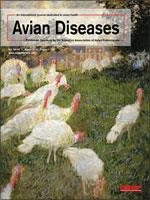Four cases of fatal toxoplasmosis in three endemic New Zealand avian species are reported. Between 2009 and 2012, two kereru (Hemiphaga novaeseelandiae), one North Island brown kiwi (Apteryx mantelli), and one North Island kaka (Nestor meridionalis) were submitted for necropsy examination. On gross postmortem, the kiwi had marked hepatosplenomegaly while the kaka and two kereru had swollen, slightly firm, deep-red lungs. Histologically there was extensive hepatocellular necrosis in the liver of the kiwi while the kaka and kereru showed severe fibrinous bronchointerstitial pneumonia. In the kiwi, protozoal organisms were present within both hepatocytes and Kupffer cells of the liver and within the epithelial cells and macrophages of the interstitium of the lungs in the kaka and two kereru. The diagnosis of toxoplasmosis was confirmed with immunohistochemistry and PCR of paraffin-embedded formalin-fixed tissue of the liver, lungs, or both. Genotyping of up to seven markers revealed that an atypical Type II isolate of Toxoplasma gondii was present in at least three of the cases. This study provides evidence that T. gondii can cause mortality in these endemic species and suggests further research is needed to determine the full extent of morbidity and mortality caused by this parasite in New Zealand's unique avifauna.
Reporte de Caso—Cuatro casos de toxoplasmosis fatal en tres especies de aves endémicas de Nueva Zelanda.
Se reportaron cuatro casos de toxoplasmosis fatal en tres especies aviares endémicas de Nueva Zelanda. Entre los años 2009 y 2012, dos palomas neozelandesa (Hemiphaga novaeseelandiae), un kiwi marrón (Apteryx mantelli), y un kaka (Nestor meridionalis) se sometieron al examen de necropsia. Durante el examen postmortem macroscópico, el kiwi tenía marcada hepatoesplenomegalia, mientras que el kaka y las dos palomas neozelandesas tenían los pulmones inflamados, un poco firmes y de color rojo oscuro. Histológicamente había una extensa necrosis hepatocelular en el hígado del kiwi mientras que el kaka y las dos palomas neozelandesas mostraron severa neumonía broncointersticial fibrinosa. En el kiwi, estaban presentes organismos protozoarios dentro de los hepatocitos y de las células de Kupffer en el hígado, y en el kaka y en las dos palomas neozelandesas se observaron dentro de las células epiteliales y en los macrófagos del intersticio del pulmón. El diagnóstico de toxoplasmosis se confirmó con inmunohistoquímica y PCR de tejido de hígado y pulmón o de ambos, fijado con formalina e incluido en parafina. La genotipificación de hasta siete marcadores reveló que un aislamiento atípico Tipo II de Toxoplasma gondii estaba presente en al menos tres de los casos. Este estudio proporciona evidencia de que T. gondii puede causar mortalidad de estas especies endémicas y sugiere que se necesita más investigación para determinar la magnitud de la morbilidad y mortalidad causada por este parásito en fauna aviaria que es única de Nueva Zelanda.





